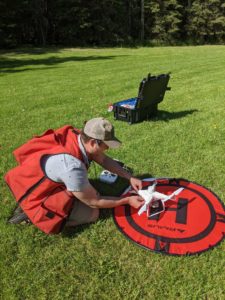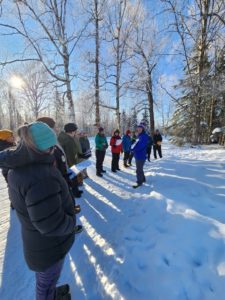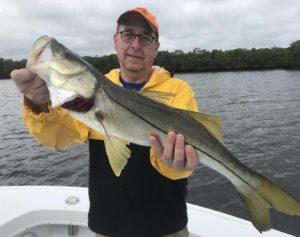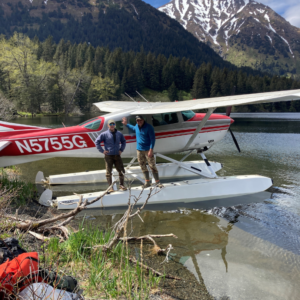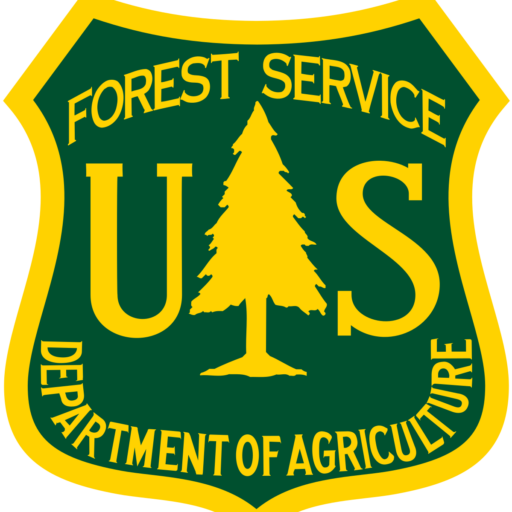Forestry FAQs
Brought to you by the Society of American Foresters, the organization that represents forestry professionals and advances sustainable management of forest resources through science, education, and technology. Learn more at eforester.org.
Welcome to the U.S. Capitol Christmas Tree and Society of American Foresters’ FAQ Page. Here you can learn more about this year’s U.S. Capitol Christmas Tree, how trees and forests are managed in the United States, and the community of forestry professionals that care for them.
-
Every year the USDA Forest Service provides a tree from one of the country’s 154 national forests for display on the West Lawn of the U.S. Capitol for the holiday season. Visit our About page for more information about this tradition.
-
This year, the tree will be harvested from Alaska’s National Forests. After a long search, candidate trees are presented to the Architect of the Capitol staff, who selects the tree that will grace the West Lawn of the U.S. Capitol this holiday season.
-
One large tree along with companion trees and handmade ornaments will make the journey from West Virginia to Washington, D.C., for the official tree lighting ceremony at our nation’s capital. The tree tour will include community celebrations at various stops in West Virginia and other states along the way. Follow the route online at www.uscapitolchristmastree.com and @uscapitolchristmastree on Facebook and Instagram, and @USCapitolTree on X, formerly known as Twitter.
-
Many climates are ideal for growing trees. Christmas trees are usually “conifers,” which are evergreen trees that keep their needles during the fall and winter months. Various fir and pine species are grown as Christmas trees in every U.S. across the U.S. but flourish in areas with long, sunny summers and cool, moist winters.
While the U.S. Capitol Christmas Tree is grown in a national forest, most Christmas trees sold in the U.S. come from private tree farms. These Christmas trees are cultivated like other agricultural crops. Farmers plant tree seedlings in neat rows or more natural stands and grow them for an average of seven years. Approximately 98 percent of Christmas trees used yearly are grown on farms as sustainable crops, like apples or pumpkins.
-
Celebrating the holiday season with a real tree is a long-standing tradition, and selecting a tree is a fun and memorable outdoor experience for the family. Getting a real Christmas tree provides opportunities to support local businesses, learn about biology and living things, and embark on an outdoor family adventure. Trees are fully recyclable and biodegradable. In most urban and suburban areas, Christmas trees are collected curbside, and trees are chipped and made into mulch so it can help something else – even more trees, playgrounds, or walking trails!
If you’re looking for a bit of adventure and fresh air, harvesting a Christmas tree can be fun. You can go to a Christmas tree farm where saws are provided, and trees are likely well-groomed. Start searching for a local tree farm at the National Christmas Tree Association’s tree finder web page Or, venture out into a national forest* to find your own. To learn more about finding a tree from your local woods and obtaining a permit, visit https://www.recreation.gov/tree-permits.
-
There are over 741 million acres of forestland in the United States. That’s enough trees to cover the whole state of Texas four times over! In addition to federal land like national forests and parks, many states have their own state and locally owned forests, and private companies, nonprofit organizations, tribes, families, and individuals also own and manage a significant portion of our nation’s forested lands.
The federal government owns and manages 30 percent of America’s forests; state and local governments own about 10 percent; and private and tribal entities own and manage 60 percent. Interestingly, over 50 percent of U.S. forestland is owned and managed by more than 10 million private owners, with most being family and individual-owned parcels averaging less than 25 acres. Source: Forest Inventory and Analysis Program
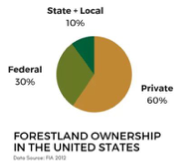
-
When a tree falls in a forest, it might have been blown down by the wind, washed out by a flood, or cut down with a saw. Each of these is considered a disturbance that can change a forest’s appearance. Even if we did nothing in our forests except to enjoy them, they would all look different in the future than they do today.
However, humans have been influencing forest change for thousands of years. From Native Americans using fire to create open forests, to the industrial logging of early colonial settlers, to the sustainable harvest regulations we have today, how we have managed forests has changed, but the fact stands that trees are still used every day by everyone in the United States. Did you know that the average person uses 640 pounds of wood yearly?
Depending on who owns the land, the activities from one forest to another may differ. Some forests might be designated solely for timber production, while others focus strictly on habitat preservation. Many forests are managed with multiple objectives, including timber production, recreational activities, wildlife habitat, and aesthetics. For example, national parks do not conduct commercial timber harvests and focus on recreation, while growing trees to produce wood products might be the goal of a tribe, a private company, or a family.
Many of the forests in the United States have been intensively managed in the last two centuries, and because of that, there are many places where forest management is necessary for maintaining forest health.
-
Forests, grasslands, and even some specialized ecosystems like bogs, have long histories of fire. Much like other natural disturbances like windstorms or hurricanes, fire has shaped the landscape of the United States. Most are aware that fire occurs in western states, but did you know the rest of the country also has fire-adapted ecosystems?
For example, in the south, the red-cockaded woodpecker and gopher tortoise live in healthy longleaf pine forests maintained by fire. In eastern forests, oaks have evolved with fire. Without fire, other trees like maples, beeches, and birches can crowd oaks and eventually replace them if fire is not used as a management tool. In the Great Lakes Region, there is evidence that fire played a role in shaping nearly all the native plant communities – including the many acres of blueberry patches!
Today, the use of prescribed fire is a valuable forest management tool and can reduce hazardous fuels, improve wildlife habitat, recycle nutrients back to the soil, and promote vegetative growth.
-
Foresters help make important decisions about how to manage forests. Foresters are trained to understand all of the elements of a healthy forest: trees, water, soil, wildlife, and more. Foresters must obtain a special license to oversee forest management decisions and activities in many states. They work to ensure that forests can continue to thrive while providing wood for lumber, paper, and other products.
The Society of American Foresters is proud that its members have been part of stewarding and conserving forests for over 100 years. Professionals, forests, and sustainability go hand-in-hand as we continue to learn and challenge ourselves to use the best available science and research to guide us in managing our forests.
-
“Green” jobs present a wide variety of career opportunities based on interest areas and skillsets. Jobs can be seasonal or full time, in both indoor and outdoor settings. Jobs in this sector include things like foresters, park rangers, wildland firefighters, wildlife biologists, policy makers, public outreach professionals, recreation managers, loggers, and lumber mill workers. If you’d like to learn more about the wide array of forestry and other green jobs, view the Society of American Foresters’ College Guide and visit Project Learning Tree’s Exploring Forest Careers website.
-
Forests help filter water, supply oxygen, provide habitat for diverse animal and plant species, and store atmospheric carbon. Our forests supply renewable resources for many products humans use every day such as lumber, paper, furniture, and heating and green energy, along with jobs that support families and communities. They also provide us with places for recreation, relaxation, and beauty. Healthy forests play a critical role in maintaining all of these benefits.
Water
In the U.S., millions rely on surface water from rivers, lakes, or reservoirs as their main source of safe drinking water. Much of this surface water comes from sources that originate in forested watersheds. Some are publicly owned and managed as a water resource, while others are privately owned and managed. Maintaining a healthy, intact forest ecosystem is critical to protecting these water sources from issues like sedimentation and runoff.Carbon
Forest ecosystems are an important part of the carbon cycle. Forests take in carbon dioxide from the atmosphere through photosynthesis. They release oxygen and store carbon in the wood. Wood is layers of carbon. Carbon is also in the soil and biomass. Biomass is a term used to denote live and dead plant material in ecosystems, and includes trees, shrubs, plants, woody debris, litter, and roots.Employment
Hundreds of thousands of people are employed in a variety of forest related jobs, from forestry, logging, millwork and cabinetmaking to engineering, hydrology, business management and academic research. These forestry and natural resource professionals help care for our forests, conserve fish and wildlife habitat, protect water, sustain forests for future generations and make innovative forest products. The forest sector encompasses a diverse array of career paths that includes firefighters, ecologists, foresters, wildlife and fish biologists, and more.Recreation
U.S. forests offer recreators millions of acres of forested lands on state and federal forests, creating robust opportunities for camping, hiking, fishing, photography, hunting and more. Our forests are a destination for visitors from throughout the world. They feature some of the largest, tallest and oldest trees on earth – trees that can’t be seen anywhere else in the world.
HUMANS IN FORESTRY
“Green” jobs, like the ones that helped to grow the U.S. Capitol Christmas Tree, present a wide variety of career opportunities suited to different interests and education levels. Forestry and natural resource professionals help manage and sustain healthy forests and ecosystems for future generations. In this Humans of Forestry series, find out more about the varied careers and people working within the forestry community.
-
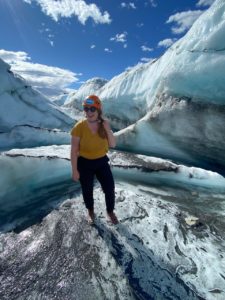 Why do you love your job?
Why do you love your job?
I work with the most amazing group of forestry professionals who are focused on one thing – preventing power outages due to trees for our members (customers).What does your average day look like? Are there any seasonal nuances?
My average day has evolved from spending most days outside looking at trees and powerlines to mostly in front of a laptop. I do get the opportunity to get out in the field with our team of foresters frequently, which is the best part of the whole week!Is there one thing about your job that may surprise people?
Utility forestry professionals are a niche of urban forestry, traditional forestry and arboriculture. Not only is it the most well-paid of the forestry professionals, but in my opinion, it is the most satisfying. Utility foresters get to see the results of their planning and work daily, while most forestry professionals have a much longer timeline -
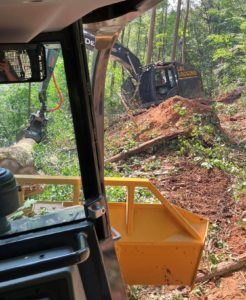 Why do you love your job?
Why do you love your job?
I love my job because I’m outdoors all the time and get to experience all of nature. I get a firsthand view of the seasons changing, encounter with wildlife, and see so many great sights and natural wonders.What does your average day look like? Are there any seasonal nuances?
My average day starts out meeting with my crew and discussing the day’s goals. My job personally consists of me supervising my other workers and cutting trees. I must address every tree I cut and make quick decisions on how best to fell the tree to protect other trees and make them efficient to remove after cutting. Every season has its own challenges. Winter is cold and the ground can get frozen hard and the snow clings to the timber, which adds to the difficulty. In the spring sap starts coming into the trees and makes them heavy, and the bark of the trees starts to pop off and creates hazards. Summer brings on heat and bugs. We must be able to stay hydrated and watch for bees!! Fall is my favorite time to be a logger. The beautiful fall leaves start to show their colors, deer have their antlers all polished up, and the temperatures are great with cool fresh air.Is there one thing about your job that may surprise people?
People may find it surprising how enjoyable this job can be. It’s challenging and rewarding which makes it enjoyable when a plan comes together, and you can see your work progress at the end of the day. -
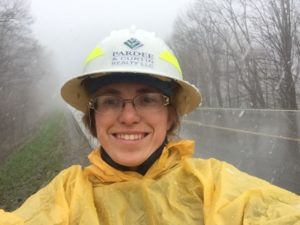 Why do you love your job?
Why do you love your job?
I love my job because I get to live in the rural community I grew up in. Every day is different. I get to spend my days outside doing important work. I help support the economy in my hometown. I make sure the water is clean and that the forest is healthy.What does your average day look like? Are there any seasonal nuances?
I work for a company that owns a large tract of land. It’s my job to ensure a sustainable harvest of the timber on the property and that the property retains its value. I manage logging operations, road building projects, and hunting and camping areas; create maps; and get involved in community relations. I work on my own a lot, but I have a great team that helps me. Every day is determined by the weather. I choose my tasks based on rain, snow, or sunny days. I’m very lucky to be able to be flexible with my responsibilities.Is there one thing about your job that may surprise people?
I’m a petite woman, so it surprises most when I show up on location, and that I work most of the time by myself in the forest. I go out in the field with a digital map on my phone and in a work vest with my tools (including food and water). I can spend a whole eight hours without seeing another person. I do run into bears and snakes, but they are usually heading in the opposite direction. -
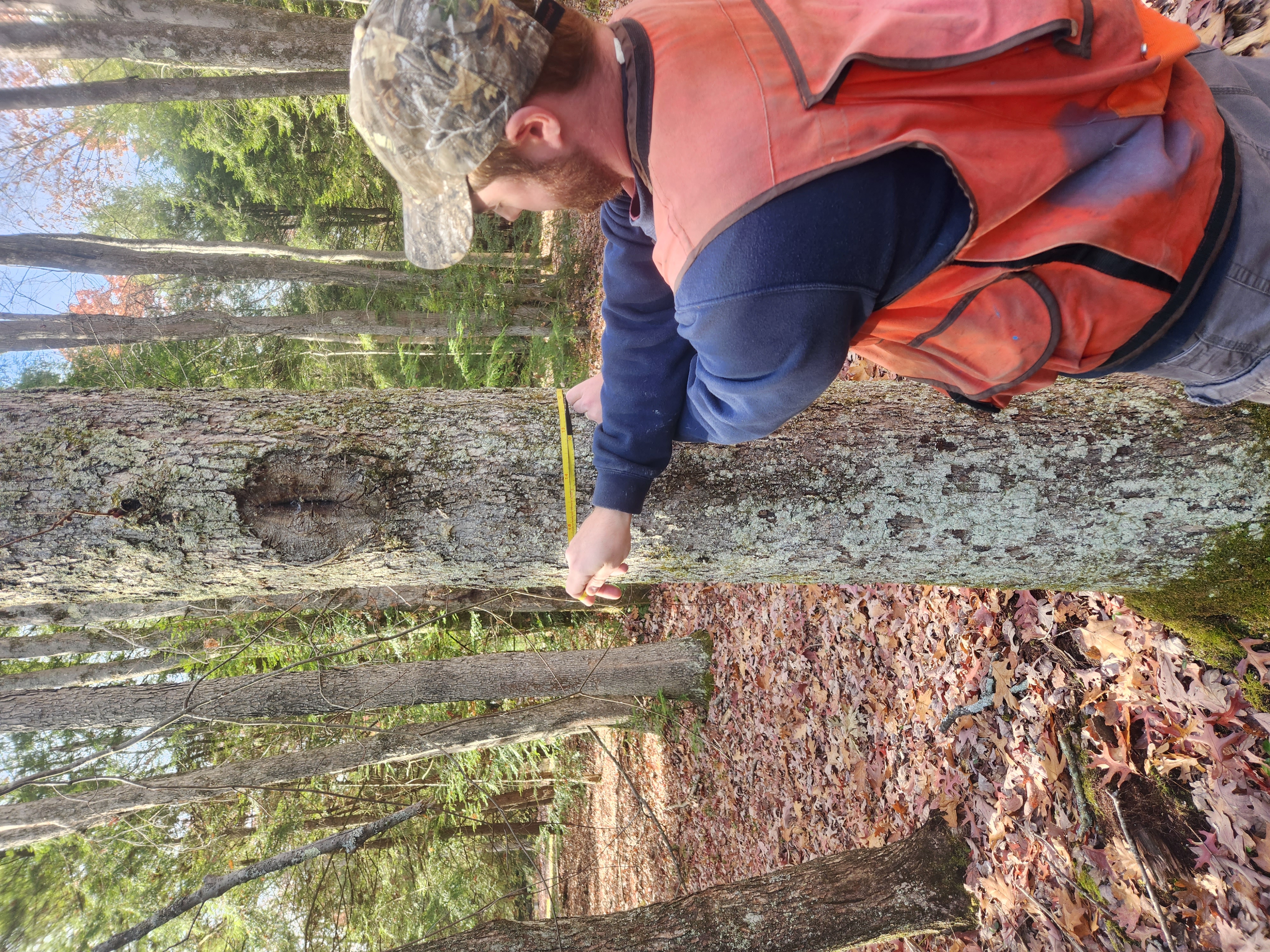 Why do you love your job?
Why do you love your job?
A forestry career is very rewarding, particularly as a consultant. Interacting with landowners and discussing sustainable and comprehensive forest management with folks is great. Working together to improve our landscape, while also providing periodic income with timber harvests, forest carbon credit sales, or other revenue streams combined with wildlife habitat creation and enhancement is sure to get landowners interested! Being outdoors most days (even in subfreezing temperatures or humid summer days) and having a physically demanding job (my personal record during a workday is 13 miles hiked!) keeps me fresh and active. Seeing the sights in the 18+ states I’ve worked in very rewarding as well!What does your average day look like? Are there any seasonal nuances?
An average day for myself as a consultant forester is highly variable. I would argue that there is no such thing as an “average day.” For example, if I’m cruising timber in midsummer in southern Arkansas, I’m in the woods no later than 6am in order to beat the heat. If I’m doing landowner consultations, we usually meet in their woods around 10am, walk or ATV ride the property and discuss management recommendations. As a business owner, there’s always those dreaded office days—easily my least favorite!Is there one thing about your job that may surprise people?
Most Northerners are surprised to hear there are armadillos in the south. Most city folks are surprised to hear about my bear encounters. I guess if I had to pinpoint something, it would be the amount of travel. I average around 40,000 miles per year on my work truck due to where the work takes me. It’s the best thing and the worst thing about the job! -
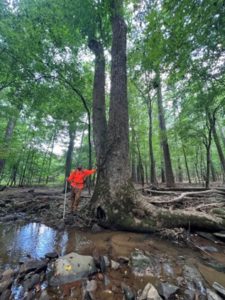 Why do you love your job?
Why do you love your job?
What I love most about my job is I get to use my creativity and technical expertise to solve new challenges every day. I also love that I get to travel to new places and experience different forest ecosystems and small towns around the U.S. I love that I’m part of an industry that is in a period of tremendous growth and technological advancement. I also enjoy having a balance of field and office work. The travel keeps the job exciting and being home most of the time keeps it from being exhausting. There are always new challenges that keep the job interesting.What does your average day look like? (Any seasonal nuances?)
My average day on the job varies season to season and day to day but it’s always busy! I may be developing harvest plans or running growth and yield models in the office one week and assessing tornado or pine beetle damage in the field the next. Tornado and hurricane season can be a stressful time for us and many other managers of large acreage across the southeast. It can involve surprise field visits to some difficult-to-reach places.Is there one thing about your job that may surprise people?
People are surprised to learn that they can enroll in a carbon project and also cut timber. I think there’s a big misconception that these two income sources are mutually exclusive for landowners. Many project types not only allow harvesting, but also credit the carbon storage in long lived wood products produced from the carbon project. -
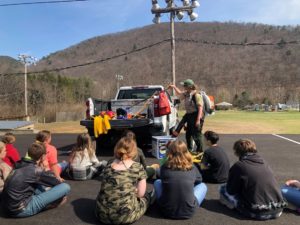 Why do you love your job?
Why do you love your job?
I love my job because of the variety of responsibilities, the feeling of accomplishing meaningful work, and the wonderful views!What does your average day look like? (Any seasonal nuances?)
My job responsibilities include forest fire control on state and private lands, inspecting logs jobs for compliance with best management practices, and landowner assistance. In an average week, I could fight a fire, teach a best management class to loggers, walk in the woods with private landowners to give them recommendations for management, and spend time with kids through Smokey Bear contacts or Project Learning Tree.Is there one thing about your job that may surprise people?
People are often surprised that the state of West Virginia experiences frequent wildfires. This spring we had an active fire season over 800 starts that burned over 11,000 acres between January 1 and June 30. People are also surprised to learn that fire has shaped our oak-pine forests and can be beneficial to wildlife, for tree regeneration and for overall forest health. -
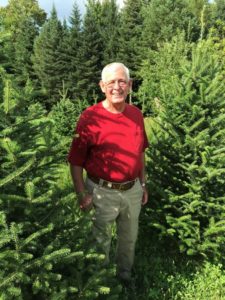 Why do you love your job?
Why do you love your job?
I manage nine acres of woodland, an acre of Christmas trees, several fruit trees, blueberries, and a 1/10-acre garden. I sell wood products, Christmas trees, fruits, and vegetables. I love what I do because it keeps me active and involves a wide variety of tasks. I also enjoy the social involvement with my customers and friends. I especially enjoy the children who come to help pick out a Christmas tree.What does your average day look like? Are there any seasonal nuances?
My average day is usually a busy one. I get up around 6:00 am and go to bed after 10:00 pm. Although the sale of Christmas trees accounts for only about 25 percent of my farm income, I spend quite a bit of time working with the trees. I trim around the trees several times during the summer. I prune the trees in late June and early July. I inspect the Christmas trees often for insect and disease problems. This sometimes requires additional action. I use a leaf blower to remove dead needles from the trees in the fall. Sometimes I have to blow the snow off the trees so customers can better judge the tree they are choosing. My favorite part of growing Christmas trees for sale is visiting with the customers, especially the children.Is there one thing about your job that may surprise people?
Customers are often surprised to learn how long it takes to grow a Christmas tree to seven feet tall. -
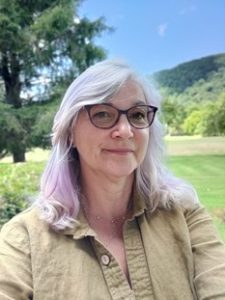 Why do you love your job?
Why do you love your job?
I have always been a plant person and both my parents grew up on farms, so I think I gravitated to forestry because it included plants and the idea that we can work within nature to benefit humans while not destroying nature. My career has been really varied over 30 years and each segment had different parts to love. When I started out, I was out in the woods nearly every day, I loved that part. As my skills grew, my title changed to forest ecologist and I helped put management of a national forest into ecological context—this work involved new challenges in interpreting scientific findings for application. For the last 15 or so years I have been a research forester, which has meant less time in the woods but new challenges and the freedom to follow my interests in diverse directions like seedbanks, bison trails, and long-term forest changes under different silvicultural practices. In the last year I have taken on the role of project leader for my research work group. In this role some of my satisfaction comes from supporting and advancing other scientists and their work.What does your average day look like? Are there any seasonal nuances?
An average day in my current dual role as research forester and project leader of a research unit that includes folks in five locations is a mix of research, project management, and leadership work. Tasks include some time spent on my own work, tasks like sorting through a dataset for errors and summarizing data for statistical analyses, consulting with managers on the Monongahela National Forest for sources of information on topics such fire behavior in mountain laurel patches, and more mundane tasks like approving purchases to keep our facilities and research going.Is there one thing about your job that may surprise people?
Foresters know a lot about many aspects of the forest! Obviously, a job title can’t contain a person’s whole job or span of interest, but within a career in forestry is room and encouragement for you to be knowledgeable about birds, grasses, fire, recreation, policy, economics, or forest products. -
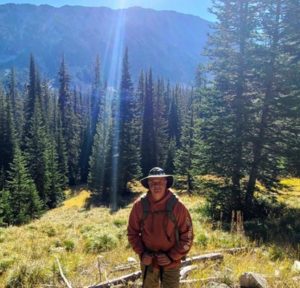 Why do you love your job?
Why do you love your job?
I love the challenges that come every day with working in the wood products industry. I have a great team of very talented people that inspire me, and I always try to look forward to whatever task the day may bring with gratitude. Whether it is a day in the woods, the sawmill or the dry kilns, every part of the business brings its own unique challenges, and every day of my career has been a learning experience.What does your average day look like? Are there any seasonal nuances?
The great part about my job is there are not many “average” days. We may be working on a new project to improve a facility, trying to improve a lumber product to better serve a customer, looking at logs whether they be for processing or for resale or working with contractors to move product to market whether it be domestic or overseas.Is there one thing about your job that may surprise people?
I have shipped hardwood lumber all over the world. Most people are surprised to find out that the sawmill down the road is a part of the global economy. -
Why do you love your job?
I enjoy my job because I have been able to help manage a diverse land base in the northern end and the Monongahela National Forest. I get to spend a lot of time outside and work with some good people.What does your average day look like? Are there any seasonal nuances?
An average day involves calling foresters in the adjacent offices to determine what they’re working on and what work needs to be done. Our staff is stationed on two different Ranger Districts, so we must coordinate to get crews together and get projects done. Most days I go out and evaluate stands for various silviculture treatments, such as timber stand improvement, commercial harvesting, or herbicide work. Other days I am in the office working in our GIS system or databases to ensure all our records are correct. I also get to work on a variety of different things including helping mark timber, herbicide applications, property boundary issues, and access roads.Is there one thing about your job that may surprise people?
I do a lot of driving. The northern end of the Forest is over 500,000 acres spread over seven counties. There is also a lot of administrative work involved with my job, working in a large agency takes time and patience. -
Why do you love your job?
Each day allows the opportunity to tap into a creative mindset. Among many other responsibilities, I get to explore new methods for training delivery while supporting a large, diverse group of utility foresters and arborists. I never imagined being able to help train others on topics that I am passionate about (i.e., utility tree risk assessment). There is also a certain level of freedom involved in the overall development of a training program, serving as both a great responsibility and great opportunity.What does your average day look like? (Any seasonal nuances?)
On the average day, I will spend time meeting virtually with other employees within and outside of my business unit. Those meeting topics may include new program initiatives, safety initiatives, or emerging technology of which I should be aware to help inform future trainings. For that reason, I get to be involved in so many different aspects of our vegetation management program. In between, I set aside time to work on training content, process review and development, and any other emerging tasks that support the department. Vegetation work for our teams in the field varies seasonally, so specific trainings and tasks also shift to reflect what is current and upcoming.Is there one thing about your job that may surprise people?
Vegetation management within a utility company is particularly dynamic and engaging. While tree pruning and brush management is the basis for any program, growing with the industry requires much more. Our team does everything from educating customers about their trees and best management practices, to surveying vegetation along utility lines via helicopter or drone, to helping restore power when the community needs it most, to managing rights of way for low-growing pollinator habitat. This certainly requires applying concepts from numerous disciplines every day. -
Why do you love your job?
I love my job is because I get to impact a handful of people every day and teach them about the things I am passionate about.What does your average day look like?
I don’t have any average days at Seneca Rocks. Sometimes I hike up the rocks and other times I wrangle black rat snakes that find their way into our informative displays. The only thing that’s consistent at my job is giving folks directions to the trailhead for Seneca Rocks Hike.Are there any seasonal nuances?
We see a big change in visitor count throughout the season and once you’re just getting used to having high numbers, they start to dwindle down again.Is there one thing about your job that may surprise people?
I think many folks expect Forest Service employees to constantly be outdoors, maybe alone, but my job allows me to talk to many different people for a living. I get to share information constantly which eventually elevates the visitors’ experience on the recreation area. -
Why do you love your job?
I enjoy my job because I get to help supply our sawmill with logs which provides jobs for our community all while getting to enjoy the forest and outdoors.What does your average day look like? Are there any seasonal nuances?
Dailey tasks can vary from checking on our logging contractors, flagging roads or property lines, meeting with landowners, or cruising timber. I manage log supply to the sawmill and maintain inventory while dealing with various weather conditions.Is there one thing about your job that may surprise people?
People ask if we plant trees and I tell them no, where we live mother nature takes care of this when the trees produce seeds and they fall to the ground, once we harvest the mature trees the sunlight hits the forest floor and the new trees start to grow.
Sponsors
Every year the USDA Forest Service provides a tree from one of the country’s 154 national forests for display on the West Lawn of the U.S. Capitol for the holiday season. Visit our About page for more information about this tradition.
Alaska’s National Forests include the Tongass and Chugach national forests, which host tremendous natural beauty with active glaciers, complex ecosystems, diverse plant and animal life, and rich geologic history, and are the traditional homelands of many Alaska Native peoples. They also support vibrant economies in nearby communities through commercial fishing, guided sport fishing and hunting, tourism, mining, and more.
This year, the tree will come from the Tongass National Forest—at nearly 17 million acres, it is the largest national forest in the United States, and the largest contiguous temperate rainforest in the world. It is a land of beauty, mystery, and natural riches that covers most of southeast Alaska. The forest has two national monuments, two productive mines, 19 Wilderness Areas protecting 6.6 million acres, over 140 reservable cabins, and 450 miles of hiking trails. It’s also larger than 10 U.S. states!
The Chugach National Forest is located in the heart of South Central Alaska. As the northernmost national forest in the Nation, it features 48,000 acres of lakes, 1,800 miles of streams that produce 66 million salmon a year (11% of Pacific salmon production), pristine ecosystems, and limitless outdoor recreation opportunities.
The U.S. Capitol Christmas Tree serves as an ambassador, representing Alaska’s magnificent forests where nature, people, and tradition. After a multi-month search, candidate trees are presented to the Architect of the Capitol staff, who select the Tree that will grace the West Lawn of the U.S. Capitol this holiday season.
This year’s logo image creation was a joint effort. The traditional elements were crafted by Tlingit and Inupiat artist Mike Hoyt and the scenery was provided by Chugach National Forest employee Shannon Holt. Their work together represents the national forests of Alaska, along with the beauty and wonder of nature that brings everyone together.
The logo highlights the majestic landscape of Alaska, its rich culture and traditions, diverse
ecosystems, and abundant resources. For Alaska Natives, it is also a nod to the strong bond they have to their lands. The red ribbon with “Alaska’s National Forests” represents the two forests in Alaska, and the second ribbon below it, “Kayéil’, Sagú, Ḵa Toowúk’éi” translates to “Peace, Joy, and Happiness” in the Tlingit language. The line art on the sides represents both an eagle and a raven, commonly found in the Indigenous cultures of southeast Alaska. Across the top, “2024 U.S. Capitol Christmas Tree” points to the symbol of hope and celebration around the holidays across the nation as “The People’s Tree.”
The image scenery is an alpenglow-drenched scene, depicting the Alaska Region theme. Receding glaciers, vast forests, and wetlands with a majestic Sitka spruce that stands prominently in the center symbolizes this gift to the American people. The constellations of the Big Dipper and the North Star are distinctive icons of Alaska, and the aurora further emphasizes its majestic qualities. Birds, fish, and other wildlife silhouettes signify the creatures of nature whose existence are so closely entwined with our own, while two human figures represent all of us and our common love of this special place.
The U.S. Capitol Christmas Tree and handmade ornaments and tree skirts will make the journey from Alaska to Washington, D.C., for the official tree lighting ceremony at our nation’s capital. The ornaments and tree skirts will be used to decorate smaller, companion trees that are locally sourced and provided to federal offices in Washington, D.C. The tree tour will include community celebrations at various stops in Alaska and other states along the route. Follow the route online at www.uscapitolchristmastree.com and @uscapitolchristmastree on Facebook and Instagram, and @USCapitolTree on Twitter.
Many climates are ideal for growing trees. Christmas trees are usually “conifers,” or evergreen trees that keep their needles during the fall and winter months. Various fir, pine, and spruce species are grown as Christmas trees in every U.S. state but flourish in areas with long, sunny summers and cool, moist winters.
While the U.S. Capitol Christmas Tree is grown in a national forest, most Christmas trees sold in the U.S. come from private tree farms. These Christmas trees are cultivated like other agricultural crops. Farmers plant tree seedlings in neat rows or more natural stands and grow them for an average of seven years. Approximately 98 percent of Christmas Trees used yearly are grown on farms as sustainable crops, like apples or pumpkins.
Celebrating the holiday season with a real tree is a long-standing tradition, and selecting a tree is a fun and memorable outdoor experience for the family. Getting a real Christmas tree provides opportunities to support local businesses, learn about biology and living things, and embark on an outdoor family adventure. Trees are fully recyclable and biodegradable. In most urban and suburban areas, Christmas trees are collected curbside, and trees are chipped and made into mulch so it can help something else – even more trees, playgrounds, or walking trails!
If you’re looking for a bit of adventure and fresh air, harvesting a Christmas tree can be fun. You can go to a Christmas tree farm where saws are provided, and trees are likely well-groomed. Start searching for a local tree farm at the National Christmas Tree Association’s tree finder web page Or, venture out into a national forest* to find your own. To learn more about finding a tree from your local woods and obtaining a permit, visit https://www.recreation.gov/tree-permits.
There are over 741 million acres of forestland in the United States. That’s enough trees to cover the whole state of Texas four times over! In addition to federal land like national forests and parks, many states have their own state and locally owned forests, and private companies, nonprofit organizations, tribes, families, and individuals also own and manage a significant portion of our nation’s forested lands.
The federal government owns and manages 30 percent of America’s forests; state and local governments own about 10 percent; and private and tribal entities own and manage 60 percent. Interestingly, over 50 percent of U.S. forestland is owned and managed by more than 10 million private owners, with most being family and individual-owned parcels averaging less than 25 acres. Source: Forest Inventory and Analysis Program
Alaska has approximately 129 million acres of forestland of all types ranging from expanding cold–tolerant forest above the arctic circle to the temperate rainforest of southeast Alaska. Alaska has the largest and the second largest National Forest in the country: the Chugach is 5.4 million acres and the Tongass has 17 million acres. These national forests include glaciers, ice fields, historic gold mines and incredible wildlife. Alaska also has the largest private forest landownership in the country through Alaska Native Peoples, who through private corporations own 44 million acres over 12 large corporations representing different ethnic groups and 200 village corporations.
When a tree falls in a forest, it might have been blown down by the wind, washed out by a flood, or cut down with a saw. Each of these is considered a disturbance that can change a forest’s appearance. Even if we did nothing in our forests except to enjoy them, they would all look different in the future than they do today.
However, humans have been influencing forest change for thousands of years. From Native Americans using fire to create open forests, to the industrial logging of early colonial settlers, to the sustainable harvest regulations we have today, how we have managed forests has changed, but the fact stands that trees are still used every day by everyone in the United States. Did you know that the average person uses 640 pounds of wood yearly?
Depending on who owns the land, the activities from one forest to another may differ. Some forests might be designated solely for timber production, while others focus strictly on habitat preservation. Many forests are managed with multiple objectives, including timber production, recreational activities, wildlife habitat, and aesthetics. For example, national parks do not conduct commercial timber harvests and focus on recreation, while growing trees to produce wood products might be the goal of a tribe, a private company, or a family.
Many of the forests in the United States have been intensively managed in the last two centuries, and because of that, there are many places where forest management is necessary for maintaining forest health.
Forests, grasslands, and even some specialized ecosystems like bogs, have long histories of fire. Much like other natural disturbances like windstorms or hurricanes, fire has shaped the landscape of the United States. Most are aware that fire occurs in western states, but did you know the rest of the country also has fire-adapted ecosystems?
For example, in the south, the red-cockaded woodpecker and gopher tortoise live in healthy longleaf pine forests maintained by fire. In eastern forests, oaks have evolved with fire. Without fire, other trees like maples, beeches, and birches can crowd oaks and eventually replace them if fire is not used as a management tool. In the Great Lakes Region, there is evidence that fire played a role in shaping nearly all the native plant communities – including the many acres of blueberry patches!
Today, the use of prescribed fire is a valuable forest management tool and can reduce hazardous fuels, improve wildlife habitat, recycle nutrients back to the soil, and promote vegetative growth.
Foresters help make important decisions about how to manage forests. Foresters are trained to understand all of the elements of a healthy forest: trees, water, soil, wildlife, and more. Foresters must obtain a special license to oversee forest management decisions and activities in many states. They work to ensure that forests can continue to thrive while providing wood for lumber, paper, and other products.
The Society of American Foresters is proud that its members have been part of stewarding and conserving forests for over 100 years. Professionals, forests, and sustainability go hand-in-hand as we continue to learn and challenge ourselves to use the best available science and research to guide us in managing our forests.
“Green” jobs present a wide variety of career opportunities based on interest areas and skillsets. Jobs can be seasonal or full time, in both indoor and outdoor settings. Jobs in this sector include things like foresters, park rangers, wildland firefighters, wildlife biologists, policy makers, public outreach professionals, recreation managers, loggers, and lumber mill workers. If you’d like to learn more about the wide array of forestry and other green jobs, view the Society of American Foresters’ College Guide and visit Project Learning Tree’s Exploring Forest Careers website.
Forests help filter water, supply oxygen, provide habitat for diverse animal and plant species, and store atmospheric carbon. Our forests supply renewable resources for many products humans use every day such as lumber, paper, furniture, and heating and green energy, along with jobs that support families and communities. They also provide us with places for recreation, relaxation, and beauty. Healthy forests play a critical role in maintaining all of these benefits.
Water
In the U.S., millions rely on surface water from rivers, lakes, or reservoirs as their main source of safe drinking water. Much of this surface water comes from sources that originate in forested watersheds. Some are publicly owned and managed as a water resource, while others are privately owned and managed. Maintaining a healthy, intact forest ecosystem is critical to protecting these water sources from issues like sedimentation and runoff.
Carbon
Forest ecosystems are an important part of the carbon cycle. Forests take in carbon dioxide from the atmosphere through photosynthesis. They release oxygen and store carbon in the wood. Wood is layers of carbon. Carbon is also in the soil and biomass. Biomass is a term used to denote live and dead plant material in ecosystems, and includes trees, shrubs, plants, woody debris, litter, and roots.
Employment
Hundreds of thousands of people are employed in a variety of forest related jobs, from forestry, logging, millwork and cabinetmaking to engineering, hydrology, business management and academic research. These forestry and natural resource professionals help care for our forests, conserve fish and wildlife habitat, protect water, sustain forests for future generations and make innovative forest products. The forest sector encompasses a diverse array of career paths that includes firefighters, ecologists, foresters, wildlife and fish biologists, and more.
Recreation
U.S. forests offer recreators millions of acres of forested lands on state and federal forests, creating robust opportunities for camping, hiking, fishing, photography, hunting and more. Our forests are a destination for visitors from throughout the world. They feature some of the largest, tallest and oldest trees on earth – trees that can’t be seen anywhere else in the world.
HUMANS IN FORESTRY
“Green” jobs like the ones that helped to grow the U.S. Capitol Christmas Tree present a wide variety of career opportunities suited to different interests and education levels. Forestry and natural resource professionals help manage and sustain healthy forests and ecosystems for future generations. In our Humans of Forestry series, you can discover the varied careers and people working within the forestry community.
Sponsors
What is your job title and work location?
Forester for Chugachmiut in Anchorage, Alaska
Why do you love your job?
I love the combination of my time afield in the remote forests of Alaska, traveling to the field by boat, plane, and helicopter, and the opportunity to use cutting-edge technology to interpret the data back at the office. In short, the diversity of work is why I love forestry.
What does your average day look like? Are there any seasonal nuances?
The beauty of working in forestry is that few days look the same. Tasks range from setting insect traps, collecting inventory data, and flying drones in the field to using programming languages and mapping software back at the office to derive insights about the forests we work in. The summer season is typically skewed to field work, but we do occasionally enjoy our time on snowshoes in the winter.
Is there one thing about your job that may surprise people?
Though we still use tools and methods for characterizing forests that are nearly a century old, the rise of technology like affordable drones, GPS units, and the rapid evolution of computer modeling has created an environment where innovation in forestry is prolific. If you are drawn to applying science with new technologies don’t overlook forestry.
What is your job title and work location?
Alaska Project Learning Tree Coordinator. PLT is sponsored by the Wasilla Soil and Water Conservation District, the AK DNR Division of Forestry and Fire Protection, and the Alaska Natural Resource and Outdoor Education Association (ANROE). I serve educators state-wide and work remotely from my home in Cantwell, Denali Borough in interior Alaska.
Why do you love your job?
I love my job because I encourage educators to take their students outdoors to connect with the trees and forests in their communities. This means that I create space for teachers to also have meaningful nature connections, and to just BE in the forest, or among trees. They get re-energized, re-inspired, and reminded about the importance of fresh air and nature noises that the forest provides. I love the social-emotional aspect of being in the woods and encourage educators to create that space for children. Their feedback from our educator workshops brings me great joy and inspiration!
What does your average day look like? Are there any seasonal nuances?
Many days I am working behind the scenes planning teacher workshops, applying for grants, reporting for grants, and connecting with the nationwide Project Learning Tree network. I also prepare presentations for natural resource professionals who conduct education and outreach activities and bring the great PLT resources to anyone who works with children and wants to get them outside to learn about trees and forests. I support educators with resources and activity books that they can use in their classrooms, nature centers, camps, and clubs. In the summer, I conduct in-person workshops and in the winter months, I connect with folks online.
Is there one thing about your job that may surprise people?
I am not a forester by trade! I am an environmental educator and a naturalist who uses trees and forests as a lens for learning about the environment. Trees, forests, and their inhabitants can teach us so much about every subject matter as well as make us feel better emotionally, provide clean air and water for our good physical health, and provide useful products that improve our daily lives. As much as I am an educator, I am also a lifelong learner and continue to learn something new every time I engage with trees, engage with foresters, and engage with other educators.
What is your job title and work location?
Forest Planner, State of Alaska, Division of Forestry & Fire Protection, Ketchikan Alaska
Why do you love your job?
I love my job because I am constantly learning. The planet is always changing, our forests are always changing, the information and technology we have access to is always changing. I love that my job gives me the chance to help the State of Alaska make informed decisions about how we manage our state forest lands for users today and into the future.
What does your average day look like? Are there any seasonal nuances?
My average day is diverse. Sometimes I’m researching management concepts or forest ecology. Sometimes I’m helping foresters write comments describing how other projects on the land affect our forestry objectives. Sometimes I’m designing websites or hosting public meetings, and sometimes I’m lucky enough to be out in the woods helping our resource foresters collect measurement data. Summer is go-time for all Alaskans, and foresters are no exception. My job also ebbs and flows with the public process involved in writing or revising State Forest Management Plans. At the height of this process, we are hustling to get the public involved through community meetings, surveys, or opportunities for comment.
Is there one thing about your job that may surprise people?
Alaska DOF manages three state forests that are all unique. They differ not only in the forest types they contain, but also in the ways they are described in Alaska’s Statutes, the ways they are organized on the landscape, and the variables we need to think about when planning management activities. Since I’m involved with planning for all three, my job gives me opportunities to travel across the state: from the Northern Region’s Tanana Valley State Forest to the Haines and Southeast State Forests along Alaska’s panhandle.
Why do you love your job?
I’ve been fortunate to have a career that allows me opportunities to do various things in many places and with many different people. With a forestry degree and a willingness to explore, it just happened. I did not have roots in forestry or logging, but grew up in construction and wood products from an agricultural area in Maine. My community knew that materials we worked with came from the forest and what we produced was what everybody wanted and needed. From the start I always introduced myself as a forester, just like a farmer will always be a farmer, a commercial fisherman will always be a fisherman; a forester will always be a forester. Being a forester has allowed me to do many things. I’ve worked with farmers on crop management and animal feed rations, as I also worked with them on their farm woodlots. I’ve worked with bankers and businesspeople on the value of stand treatments, net returns, and future timber markets. I’ve worked with villagers in drought-stricken countries to establish tree nurseries and learned mango tree grafting from a Russian horticulturist, which I then taught to farmers on the edge of the Sahara. It has been 40 years since I was working weekends at a Christmas tree lot and maple sugar bush in Maine to supplement my early forestry career. Today 4,000 miles from balsam fir Xmas trees and maple syrup, I work as a consultant. I wake up every morning with more things to accomplish, more things to learn, and more trees to count and plant and each day wondering if there is enough time for it all. I am currently working as a commercial fisherman two months out of the year and working mostly with conservation organizations in forest management, ecosite restoration, and reforestation.
What does your average day look like? Are there any seasonal nuances?
You start your day with a plan in mind, set priorities, drink a cup of coffee, accomplish a few things, and read something useful. Then on to a computer, attend a meeting, live or virtual, maybe some field work or working with local conservation groups. I currently work with local government, mostly with forestland restoration. At this time in my career, I find myself as an advocate for good forestry and conservation planning on all lands. It is seasonal, based on when it’s the best time to do surveys, treatments, travel over snow and extreme cold. Not all forestry jobs have the flexibility that I have had, but as one’s career develops you find yourself in these great situations where you can practice your personal conservation ethic.
Is there one thing about your job that may surprise people?
The image of foresters as being solitary, all knowing, rugged individuals surviving the trials and savagery of a wilderness is a wonderful folklore. The first foresters were very well educated, often from wealthy aristocratic families. They used the resources at hand including the knowledge of science and history of those that lived on the land. They worked with many different professionals, conservationists, preservationists and industrialists. Today foresters continue to do the same and so much more. My forest harvest and operations professor at the university had a final exam question that caused many of us to wonder. “There are two types of foresters, those that wander the forest and talk to the trees or the ones that talk to people. No answer is wrong, and state why.” Of course I chose “talk to people.” Today, after 45 years as a forester I would answer that I do both, because we can.
What is your job title and work location?
Executive Director, Western U.S. Western Forestry & Conservation Association
Why do you love your job?
I love being outdoors and experiencing new environments. For 30 years, I worked with government agencies, private companies, and nonprofit environmental organizations to do just that! Every job, from my first seasonal field technician jobs to my current job as executive director, has been my dream job! I love my current job because, although I don’t do field research anymore, I plan events and training for those who do—and travel the world to make this education available.
What does your average day look like? Are there any seasonal nuances?
My current job involves developing and/or managing training and other events for professional natural resource managers. An average day usually starts around 4am for coffee and a quick meditation before conference room setup by 6am. From 7am to 6pm I manage all logistics of large group meetings—audiovisual, speaker preparation and support, and ensuring food is out on time. From 6pm-11pm I catch up on email and other business work like paying bills and sending emails to course participants about the current course and developing/sending information about future events.
The job is generally seasonal since most field workers need to work in the field when the weather is amenable instead of being indoors at training. Most training and events I plan are for fall through spring and exclude summer. However, with the addition of webinars and hybrid meetings, the summer field months are now filling up with creation of webinar materials.
Is there one thing about your job that may surprise people?
Few people know how much background preparation and on-site management is necessary to ensure that attendees DON’T NOTICE how much background preparation and on-site management there really is. It’s a funny thing to work so hard to be NOT noticed, but really, that’s the goal in event management—that subject matter experts and attendees can just focus on learning instead of all the logistical details.
What is your job title and work location?
Director, Enterprise and Trust Services at Chugachmiut, Anchorage, AK
What does your average day look like? Are there any seasonal nuances?
I am responsible for business and economic development and federal trust services in realty and forest management. My work is varied and includes attending meetings, planning, reports and applications, project management, and more.
Is there one thing about your job that may surprise people?
I spend a lot of my time doing building project management.
What is your job title and work location?
General Manager, Aurora Energy Solutions, Fairbanks, AK
WHY do you love your job?
I love working with renewable resources while providing a great heat source to our community.
What does your average day look like? Are there any seasonal nuances?
I manage a firewood processing facility (pictured above) year-round…there are tons (literally) of seasonal nuances. Receiving logs into our yard is very dependent on the season.
What is your job title and work location?
Forestry Director for Chugachmiut in Anchorage, AK.
Why do you love your job?
I like my job because It is varied and I also get to travel to some very incredible places in Alaska and work in some wonderful communities.
What does your average day look like? Are there any seasonal nuances?
A typical day is in the office. I do business management of our forestry and fire program as well as work typical of consulting foresters. I also get an opportunity to travel and do field work in some remote forests. Chugachmiut works in some very incredible places like tribal lands within the Kenai Fjords National Park, Icy Bay, and the remote villages we serve. The work changes seasonally. In the summer we have field work and day-to-day management of field crews while the winter we do more writing and analysis of data collected during the field season.
Is there one thing about your job that may surprise people?
Many of our field sites are not on a road system. We cannot drive there and have to fly or take a boat.
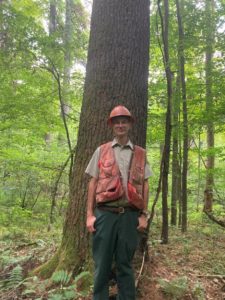 Why do you love your job?
Why do you love your job?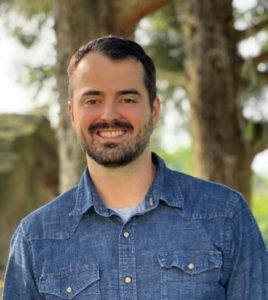 Why do you love your job?
Why do you love your job?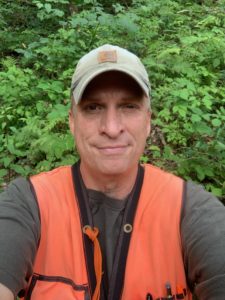 Why do you love your job?
Why do you love your job?